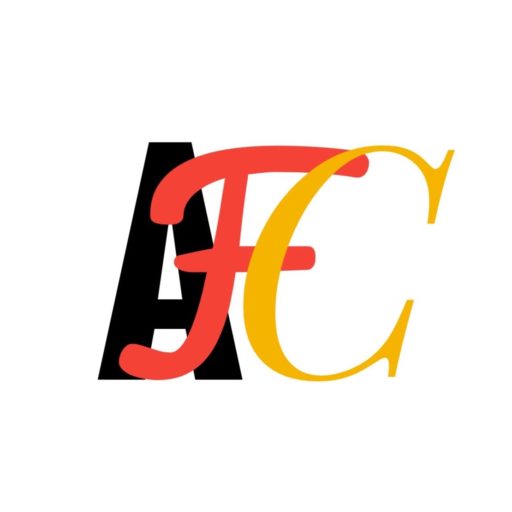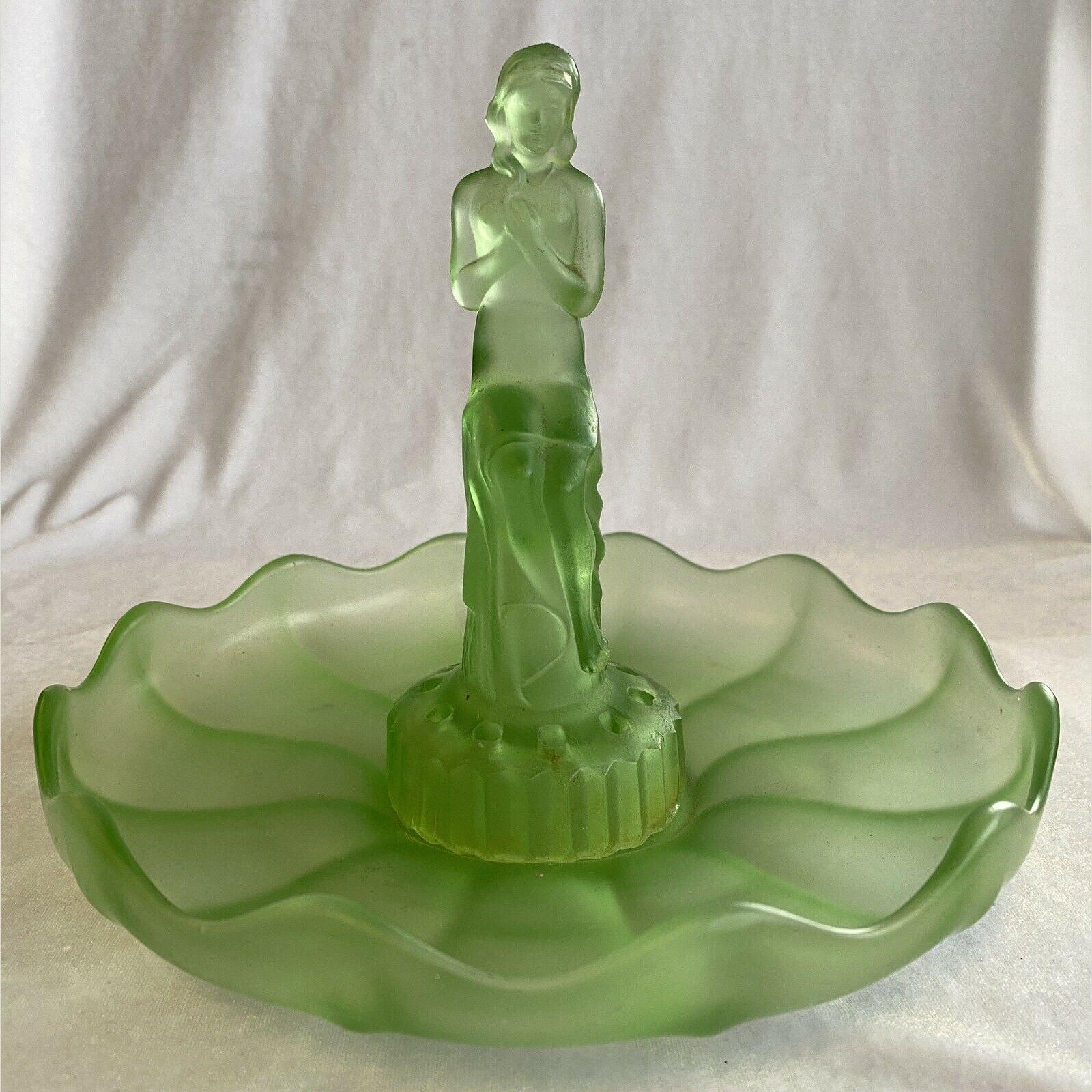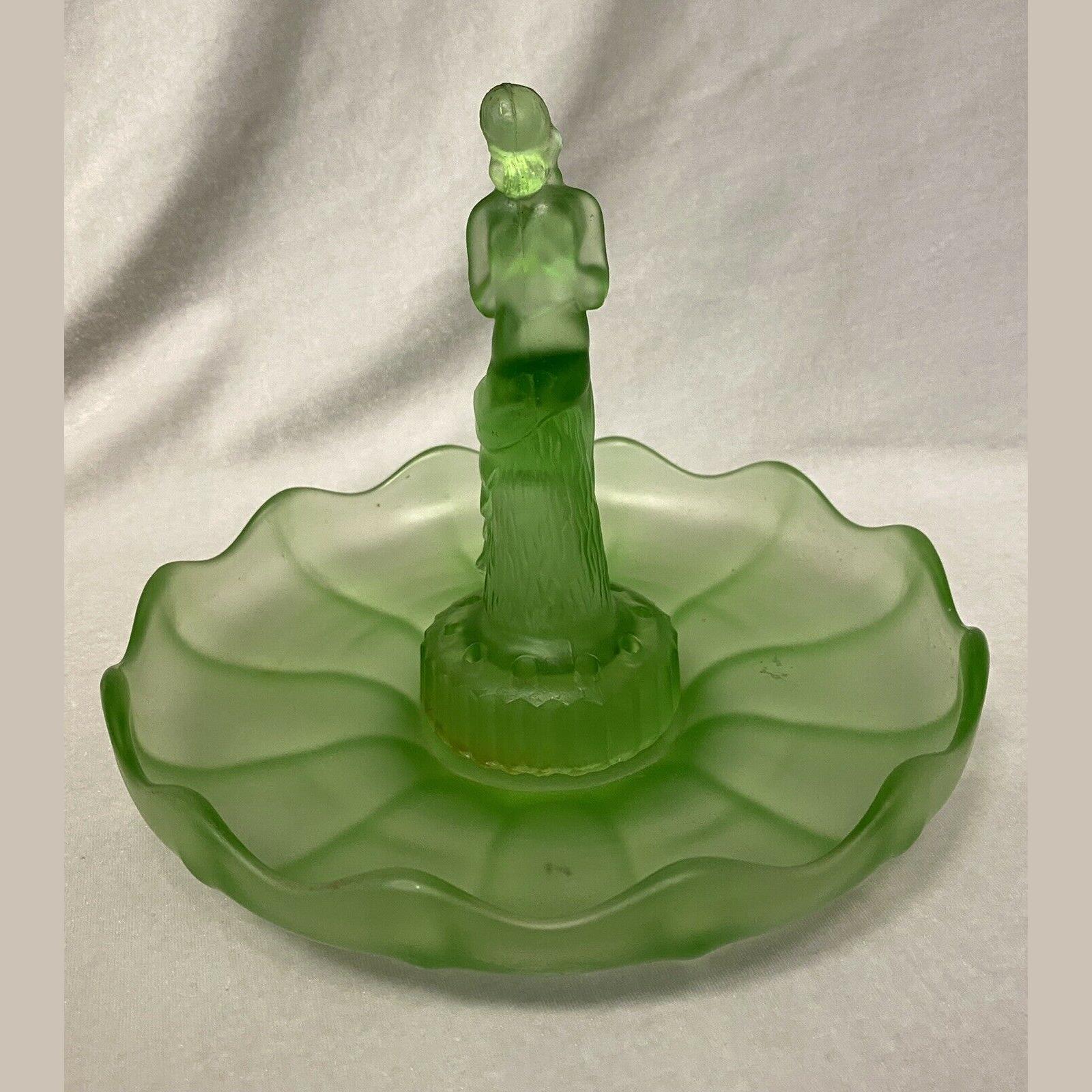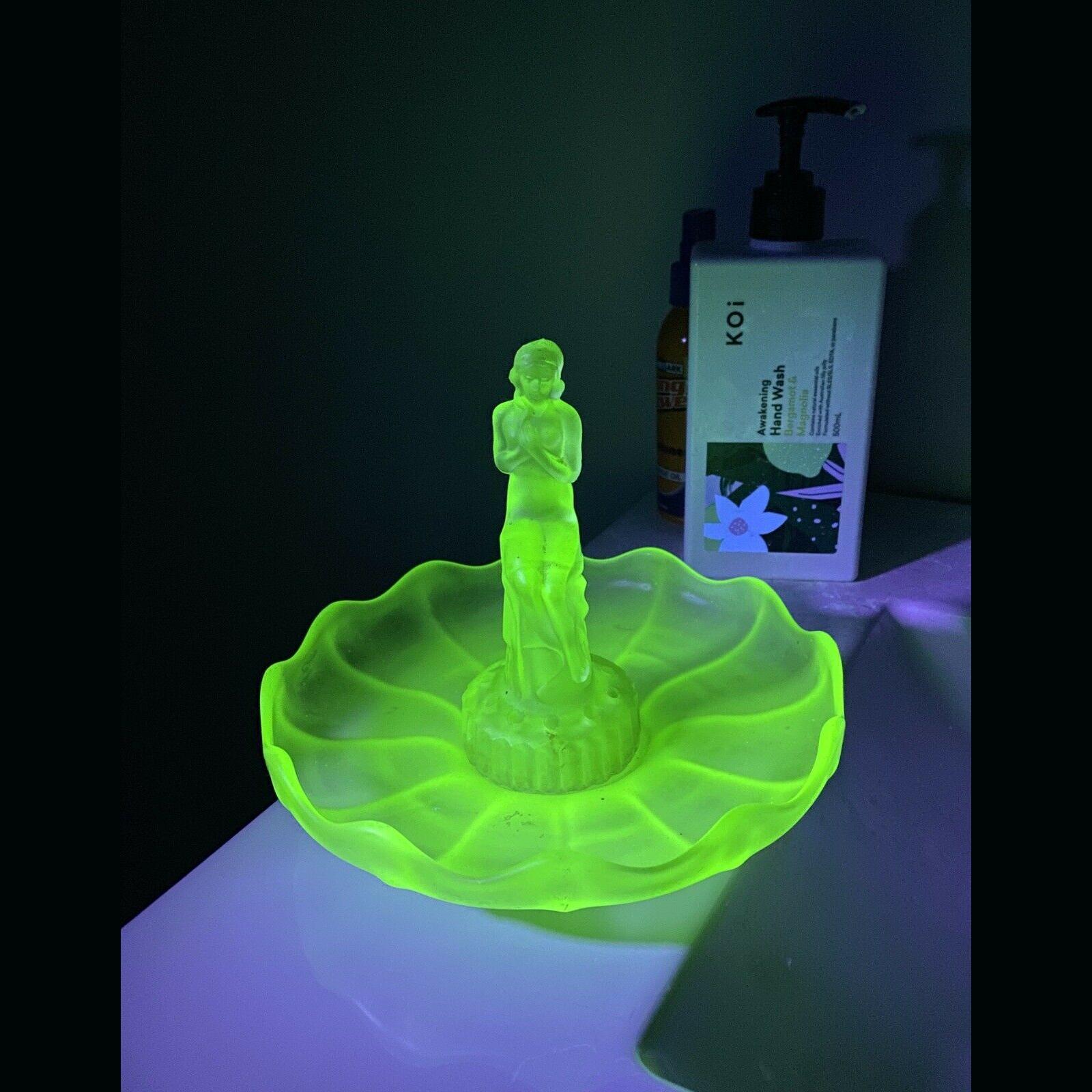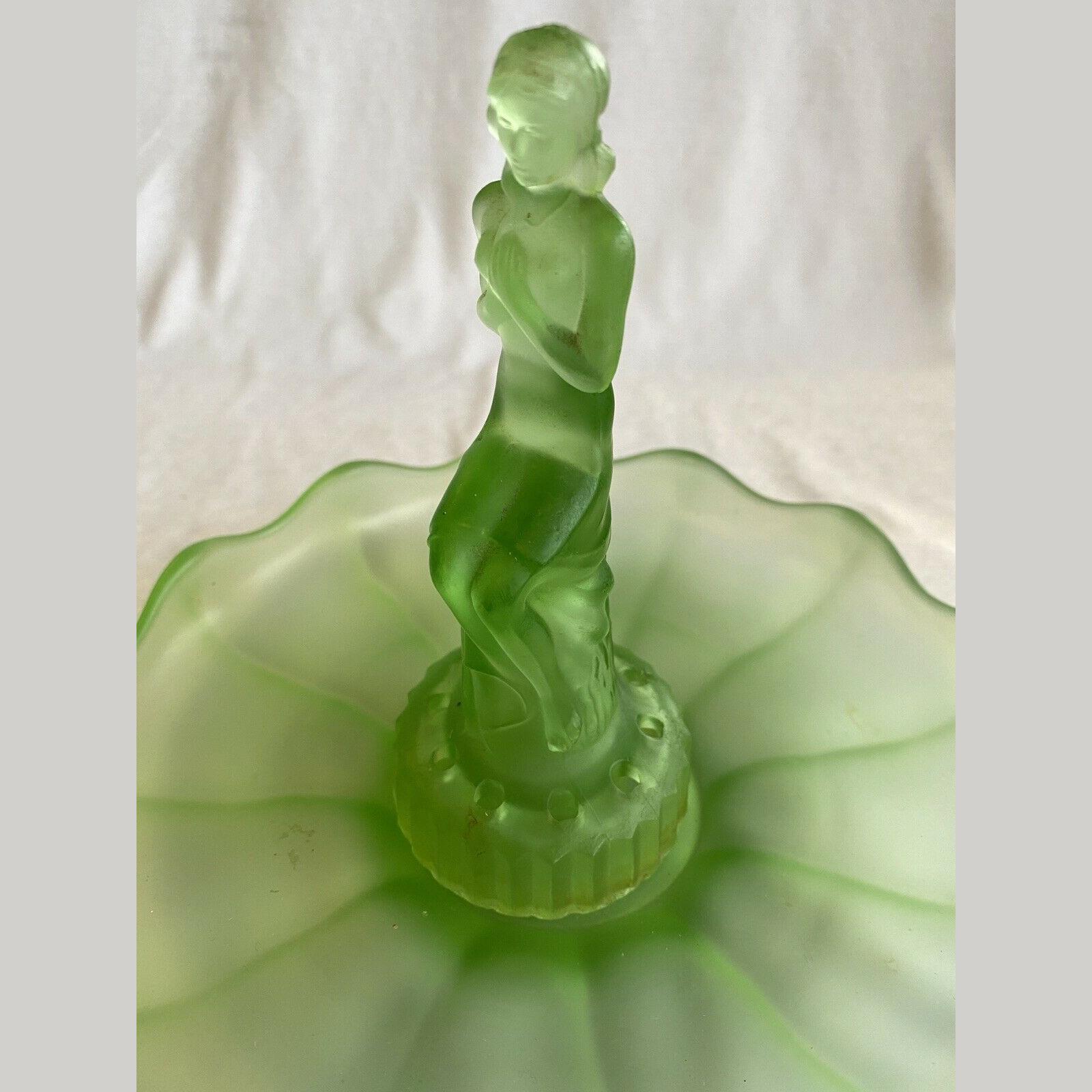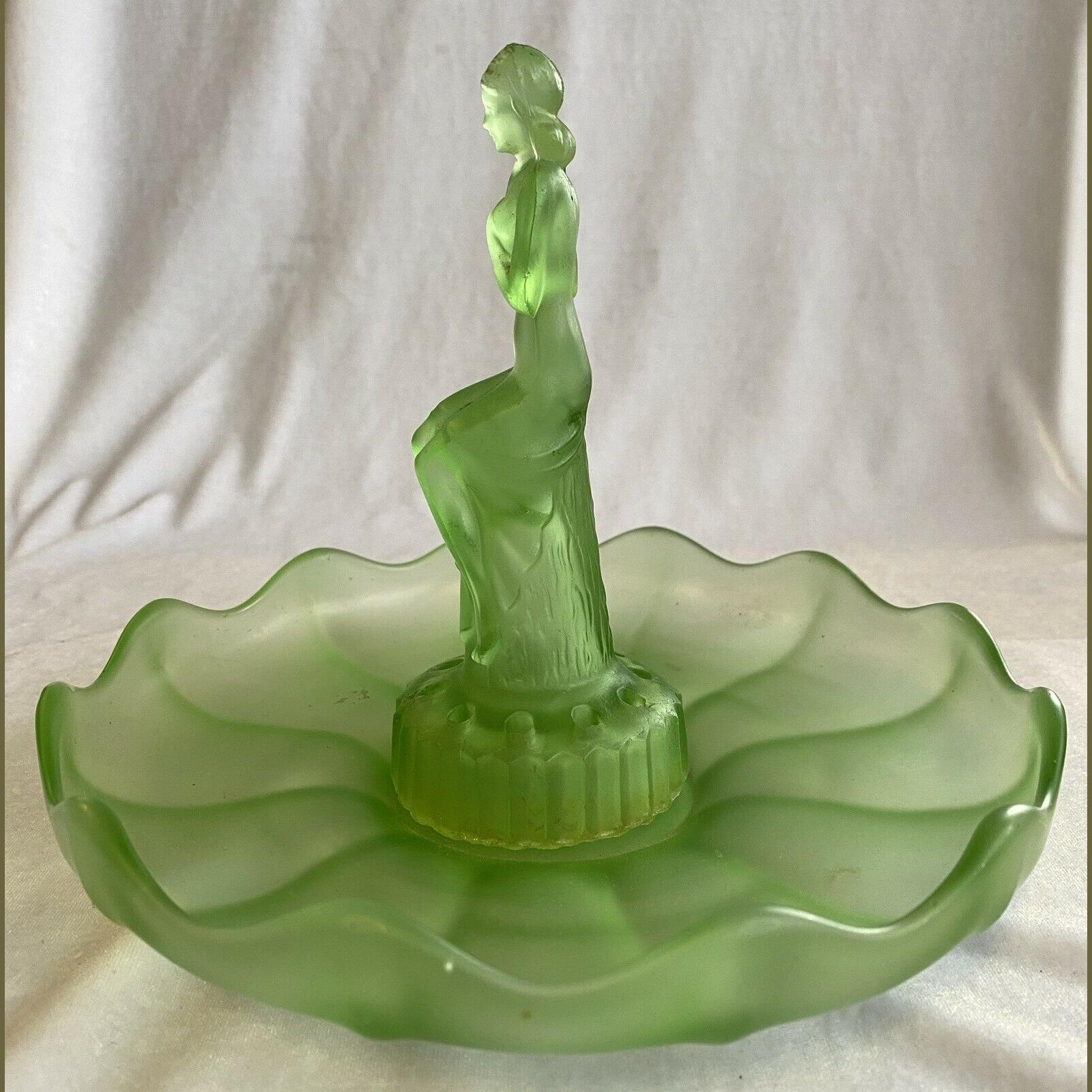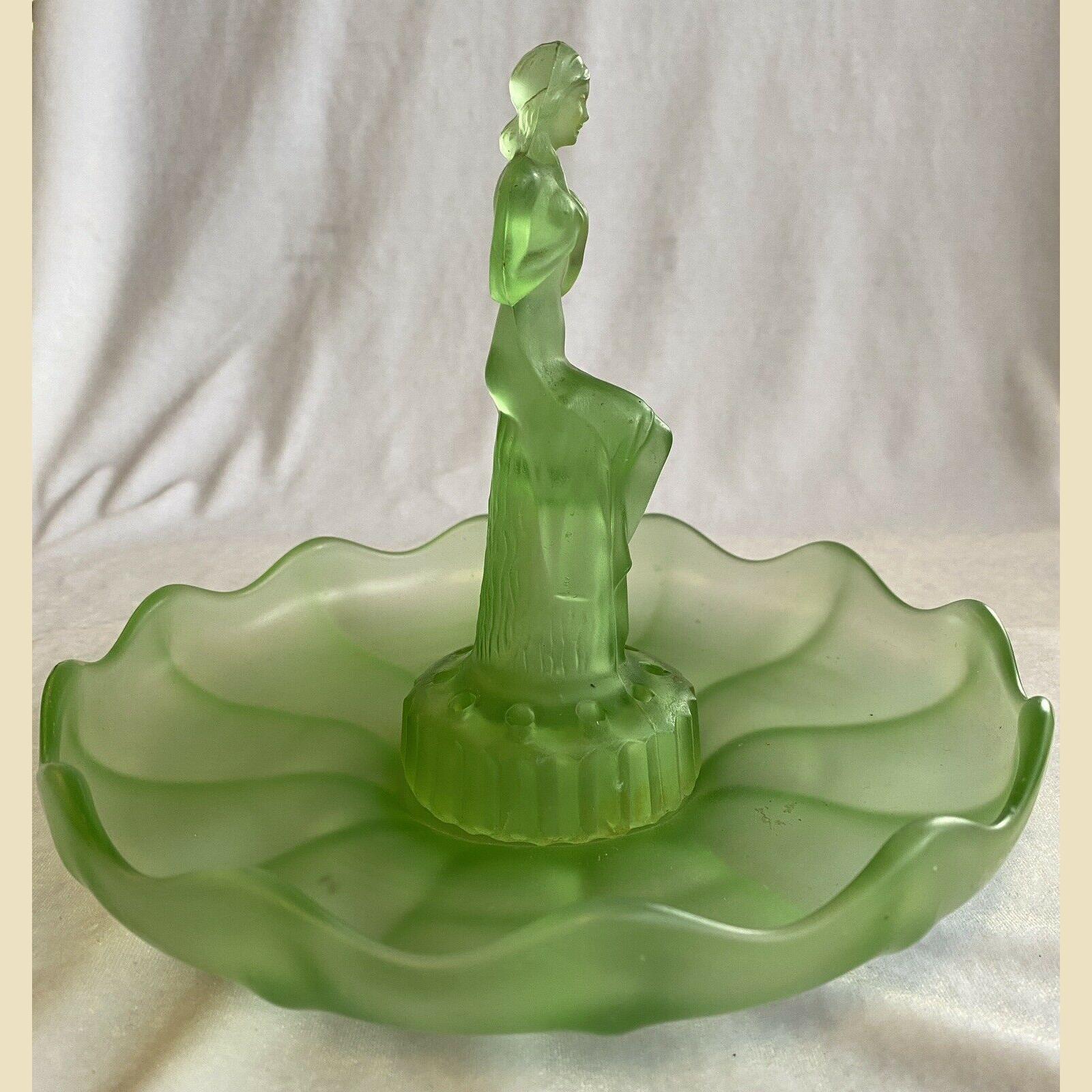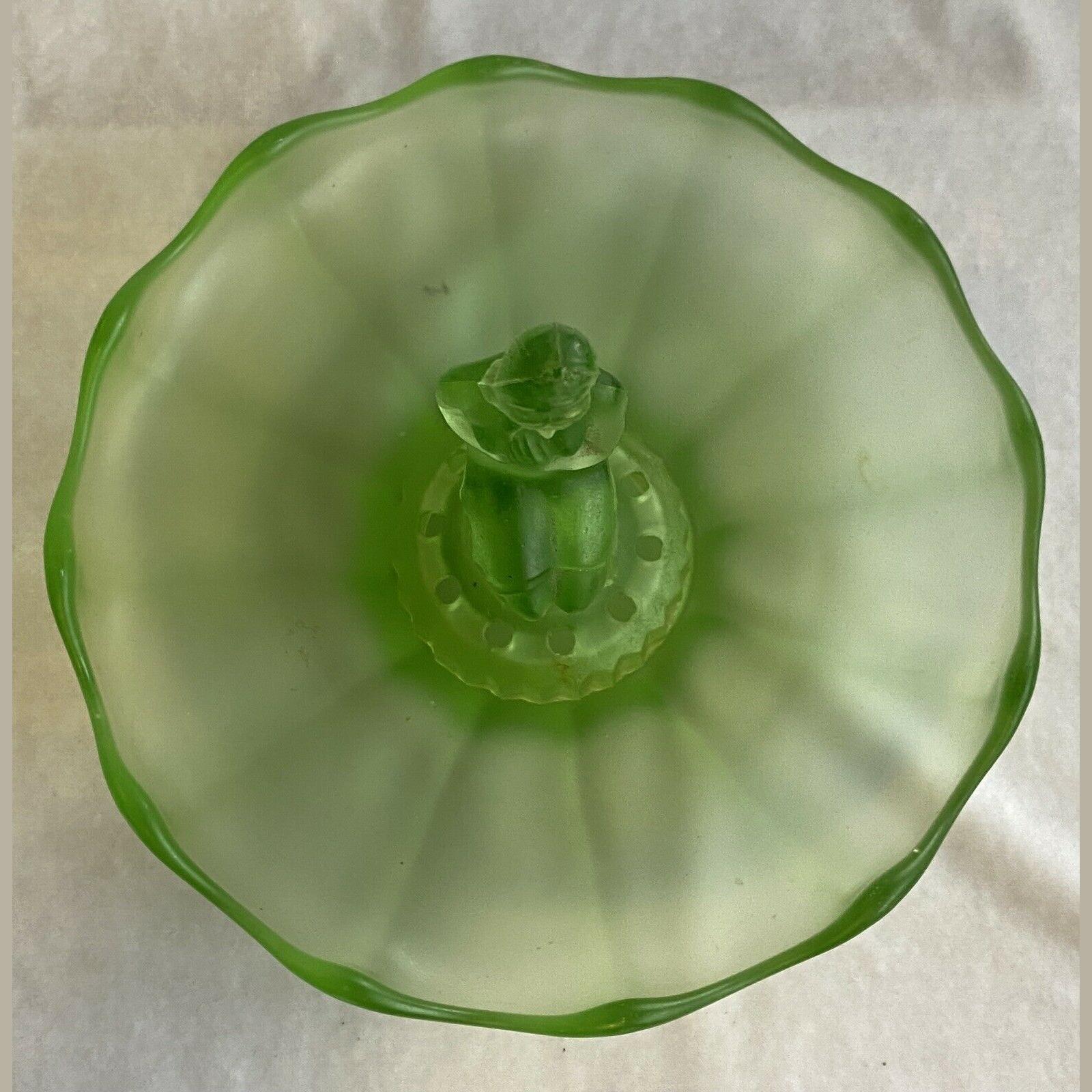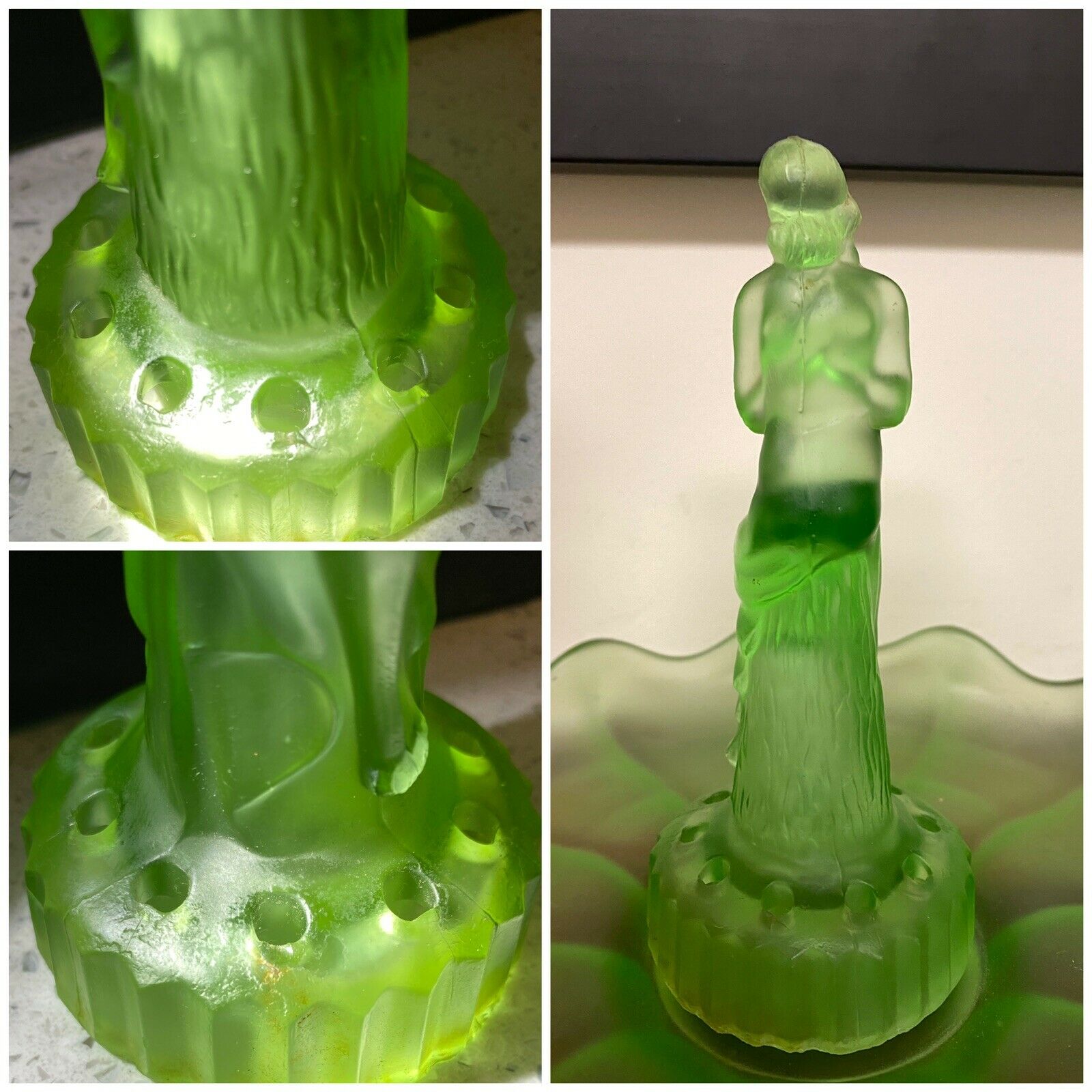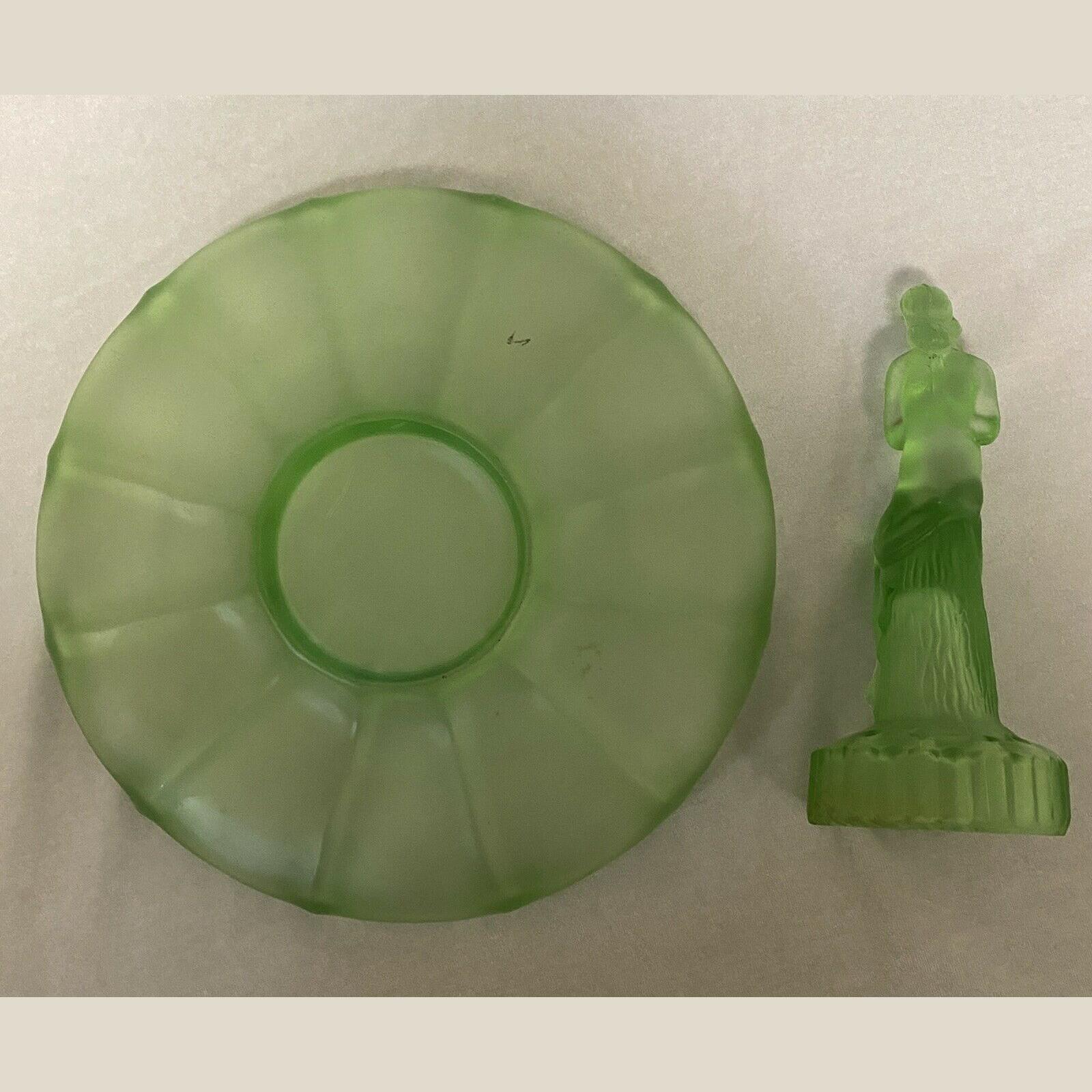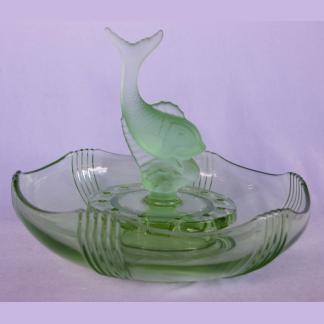Bio & Information
Uranium Glass info
Uranium Glass is glass which has had uranium, usually in oxide diuranate form, added to a glass mix before melting for coloration. The proportion usually varies from trace levels to about 2% uranium by weight, although some 20th-century pieces were made with up to 25% uranium. The normal colour of uranium glass ranges from yellow to green depending on the oxidation state and concentration of the metal ions, although this may be altered by the addition of other elements as glass colorants. Uranium glass also fluoresces bright green under ultraviolet light.
The use of uranium glass dates back to at least 79 AD, the date of a mosaic containing yellow glass with 1% uranium oxide found in a Roman villa on Cape Posillipo in the Bay of Naples, Italy by R. T. Gunther of the University of Oxford in 1912. Starting in the late Middle Ages, pitchblende was extracted from the Habsburg silver mines in Joachimsthal, Bohemia (now Jáchymov in the Czech Republic) and was used as a colouring agent in the local glassmaking industry. Martin Klaproth (1743–1817), who discovered uranium, later experimented with the use of the element as a glass colourant. At the end of the 19th century, glassmakers discovered that uranium glass with certain mineral additions could be tempered at high temperatures, inducing varying degrees of micro-crystallization. This produced a range of increasingly opaque glasses from the traditional transparent yellow or yellow green to an opaque white. During the Depression years, more iron oxide was added to the mixture to match popular preferences for a greener glass. This material, technically a glass-ceramic, acquired the name “Vaseline glass” because of its supposedly similar appearance to petroleum jelly. Today, a few manufacturers continue the Vaseline glass tradition: Fenton Glass, Mosser Glass, Gibson Glass and Jack Loranger. U.S. production of uranium glasses ceased in the middle years of World War II because of the government’s confiscation of uranium supplies for the Manhattan Project from 1942 to 1958. After the restrictions in the United States were eased several firms resumed production of uranium glass, including Fenton, and Mosser, though uranium was still regulated as a strategic material. Following the Cold War, restrictions on uranium glass were completely lifted. During this time, many older pieces entered the free market and new pieces continued to be produced in small quantities into the 2000s.
